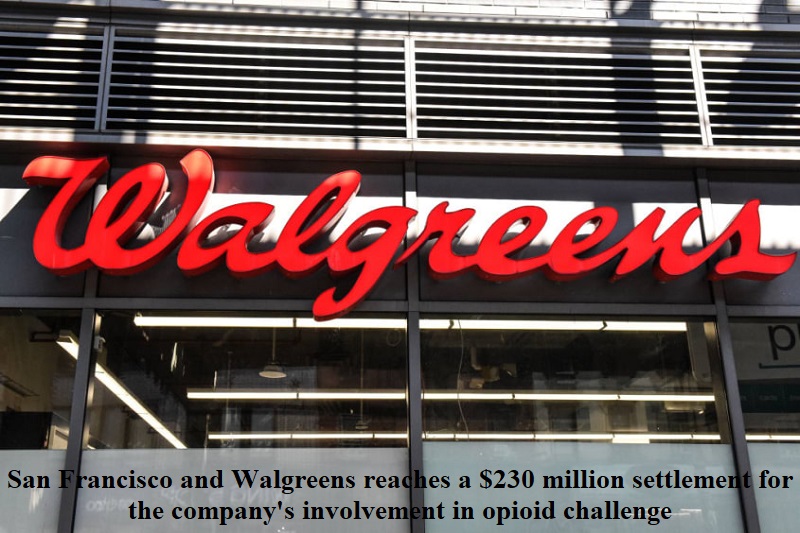
San Francisco has reached a settlement of $230 million with Walgreens concerning the company’s role in the city’s unique opioid crisis, marking the largest payment ever made to a local government in relation to nationwide opioid litigation. San Francisco’s city attorney confirmed this information.
The settlement comes after a federal judge determined nine months ago that Walgreens’ mistakes played a significant part in a crisis that has had devastating consequences for the city, overwhelming hospitals and ravaging neighborhoods. US District Judge Charles Breyer also criticized Walgreens for its failure over 15 years to adequately monitor opioid prescriptions and warn about the potential misuse of these highly addictive drugs such as fentanyl, oxycontin, and oxycodone. The Guardian reported Judge Breyer’s ruling on August 10, 2022.
San Francisco City Attorney David Chiu expressed that the decision gives a voice to the thousands of lives lost to the opioid epidemic and highlights that the crisis was created by the opioid industry, burdening local jurisdictions like San Francisco for far too long.
The settlement reached by Walgreens avoids a trial to determine damages. In its statement, Walgreens mentioned that it disputes liability and does not admit guilt, but resolving the matter would enable the company to concentrate on patients, customers, and communities. The company also expressed its sympathy for those impacted by the tragic crisis.
After other drug manufacturers and distributors agreed to settlements totaling more than $120 million, Walgreens, based in Deerfield, Illinois, was the only remaining defendant in San Francisco’s civil complaint.
Judge Breyer discovered that Walgreens’ San Francisco pharmacies received over 1.2 million opioid prescriptions with “red flags” between 2006 and 2020 but conducted due diligence on less than 5 percent of them before dispensing the medications.
The number of deaths started to rise in December, and by January, the city had recorded 82 deaths, reaching an all-time high in overdose fatalities. This increase occurred shortly after the city closed a vital outreach center where individuals were using narcotics under medical supervision and intensified law enforcement efforts in San Francisco’s under-resourced Tenderloin neighborhood.

Post Your Comments